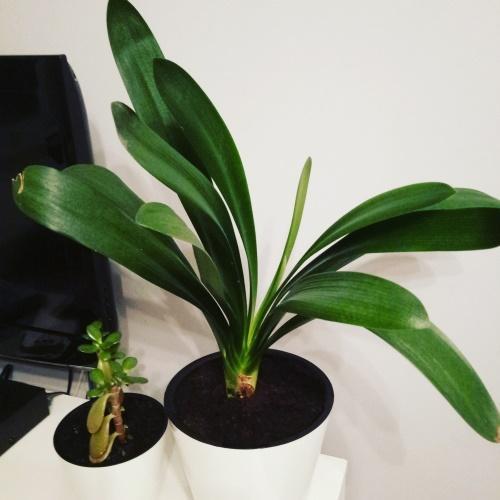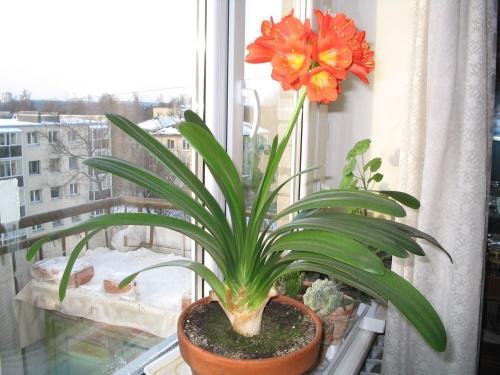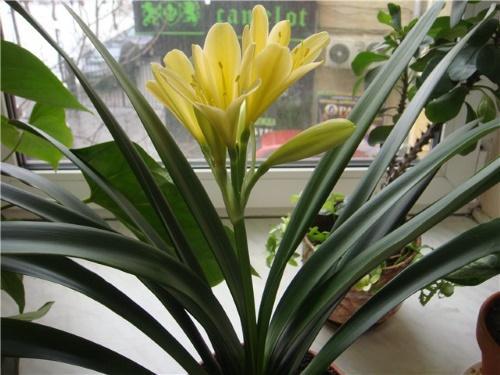We grow clivia at home - a blooming decorative perennial

Long large leaves of a decent size, painted in a rich green color, collected in a dense rosette and growing in a fan pattern - this is photo of clivia... She belongs to the amaryllis family.
Clivia is one of the most beloved domestic, decorative flowering, indoor plants. A fan of green xiphoid leaves is quite beautiful in itself, but when a tall peduncle appears among them, at the top of which many large bells bloom, the bush becomes a real decoration of the room. With proper care, clivia can please with its flowering annually, and some adult shrubs even twice a season. What does a flower need for regular flowering?
Klivia is also often called the Kaffir lily.
Read also the article: clivia (photo) - home care!
What does Clivia love?
Clivia is demanding on lighting: she needs the sun, and at the same time she is afraid of him. Ugly burn spots appear on the leaves from direct rays, therefore, in order to avoid them, it is better to find a place for the flower with a bright, but diffused, light.
The plant also loves fresh air and feels comfortable outside in the summer (in partial shade).
Clivia prefers moderation when it comes to moisture. Spraying serves for her more as a way to clean the leaves of dust, and water the flower as the soil dries out, preventing stagnation of moisture. In summer, watering is more frequent, especially if the pot is outside.
What should i avoid?
Clivia is a flower that loves consistency. Having decided to grow a plant at home, you should immediately decide on its permanent place of residence and in the future do not rearrange the pot during the growing season (the exception is the dormant period).
It is especially important not to twist the flowerpot during the flowering period. Even if it seems to you that the peduncle tilts strongly to the side and can not wait to turn the container towards the sun, you should not do this: it is better to carefully substitute a support under it if necessary.
Also, there is no need to repot the bush again. Clivia herself will give a signal that it is time for her to change the flowerpot: roots will appear from the drainage holes.
In order for the flower to plant buds, and not to drive new leaves, it should be planted in small pots, otherwise flowering will not come before the roots fill the container.
Features of flower care during the rest period
In autumn, after the end of flowering, the clivia retires and this is a prerequisite for ensuring the annual flowering of the bush. From this moment, watering is reduced to a minimum, and the flower itself is placed in a cool dry place (12-14 degrees Celsius). There the clivia stays until it rests and begins to form a new peduncle.
Young plants usually rest for 2 months. Adult specimens replenish their strength within 4 months.
When the flower arrow at the clivia grows to a mark of at least 10 cm, the pot is returned to a bright place in a warm room. It is advisable to put it in the position in which it stood before.